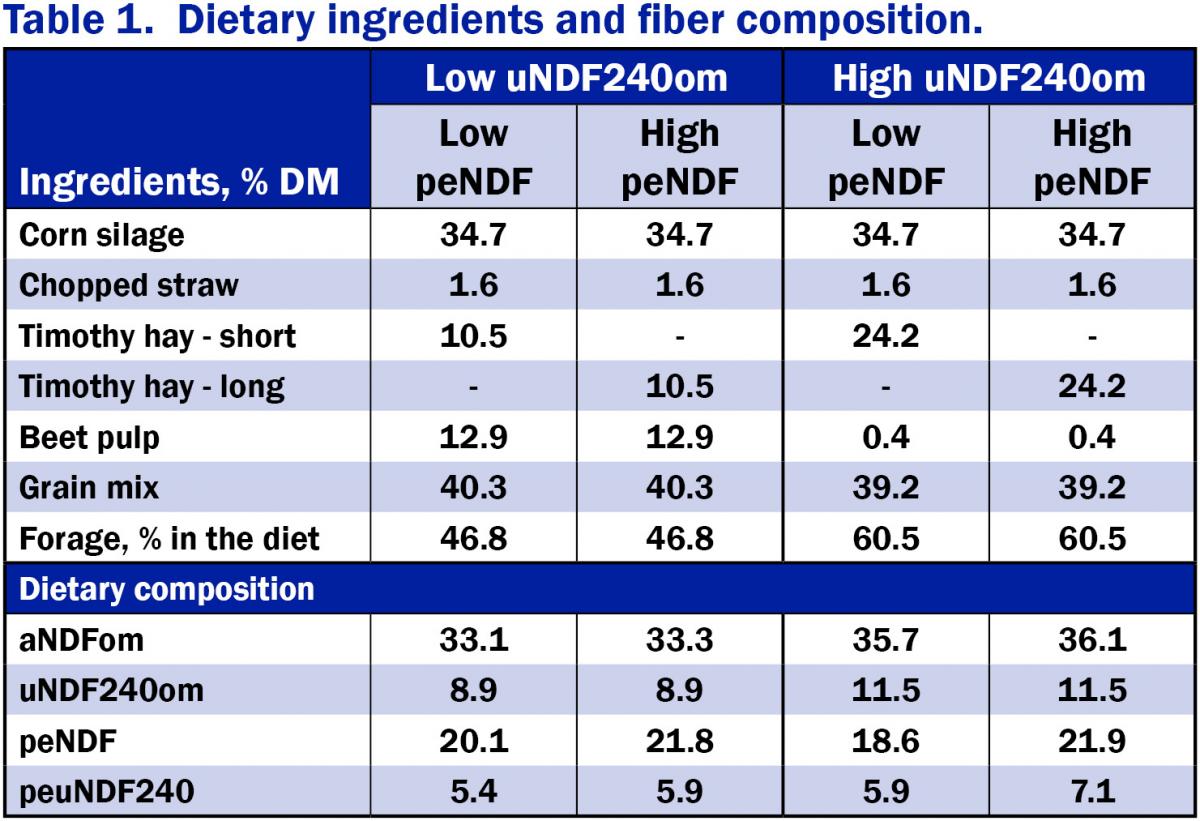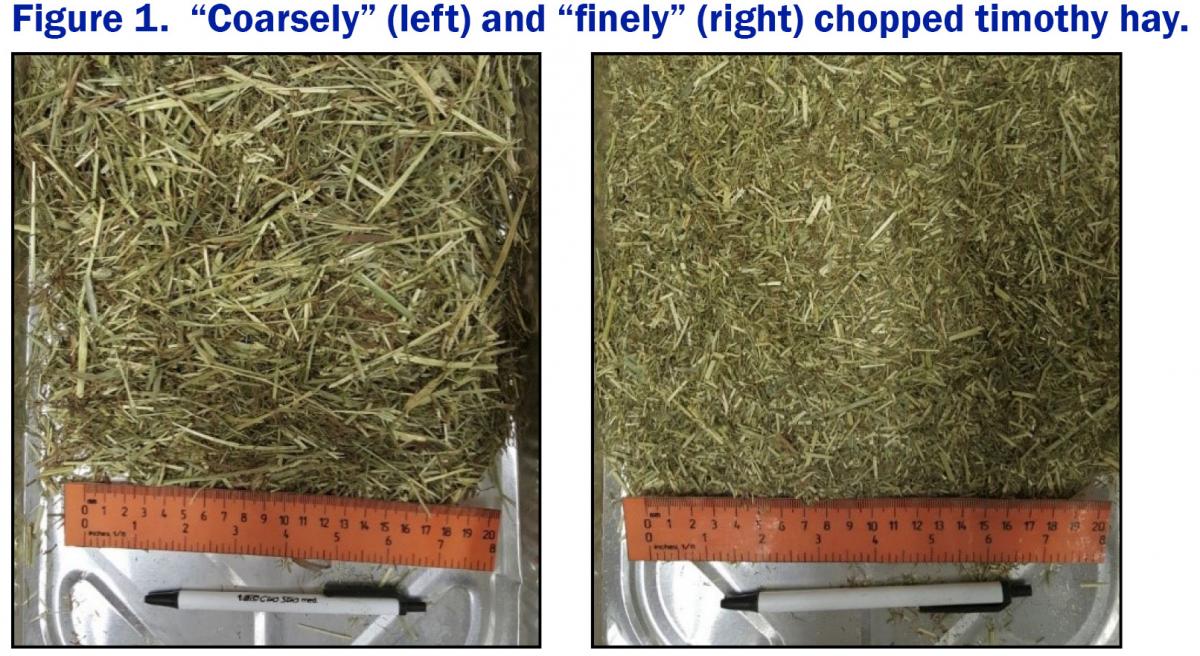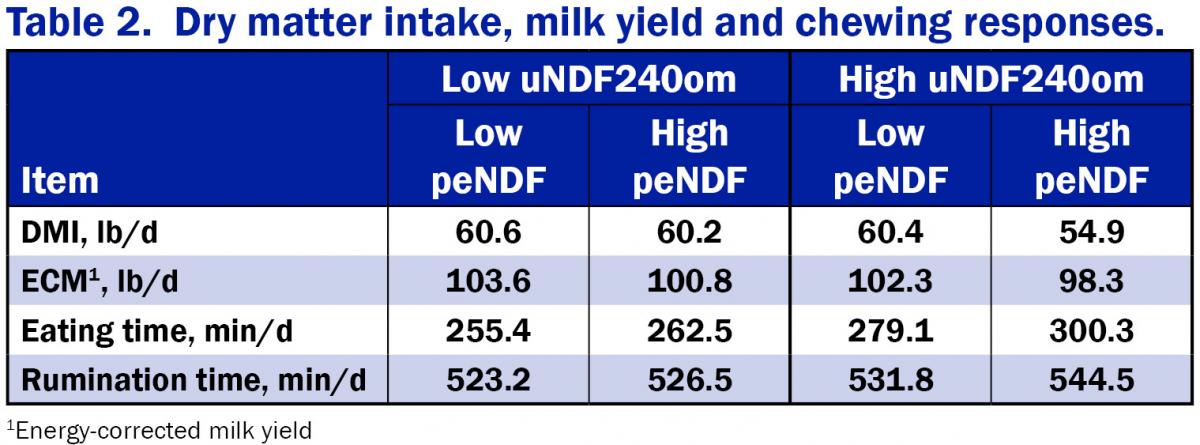
A new look at fiber digestibility and particle size – Dr. Rick Grant and Wyatt Smith, William H. Miner Agricultural Research Institute
 By Dr. Rick Grant and Wyatt Smith, William H. Miner Agricultural Research Institute president and MS graduate student
By Dr. Rick Grant and Wyatt Smith, William H. Miner Agricultural Research Institute president and MS graduate studentThe potential interaction between forage particle size and fiber digestibility raises two questions:
- How important is particle size if we know the fiber digestion pools of a forage?
- Similarly, if forage fiber indigestibility is greater than desired, can we compensate by chopping the forage finer to maintain feed intake and milk yield?
We assessed particle size as physically effective neutral detergent fiber (peNDF) and fiber indigestibility as undigested NDF measured at 240 hours of in vitro fermentation expressed on an organic matter basis (uNDF240om). We related cow intake and milk yield responses to peNDF, uNDF240om and peuNDF (the dietary physical effectiveness factor multiplied by uNDF240om).
Lactating Holstein cows were fed four diets formulated to differ in uNDF240om and peNDF by changing the forage-to-concentrate ratio and particle size of timothy hay (diet details in Table 1). We chopped timothy hay to either a finer or coarser particle size using a Haybuster® hammer mill. Figure 1 shows photographs of both the finely and coarsely chopped timothy.


Cows consumed high levels of dry matter intake (DMI) for all diets except for the diet with high uNDF240om and peNDF (Table 2). Most importantly, cows fed the more finely chopped ration with higher uNDF240om had feed intake similar to the more digestible diets.

Energy-corrected milk yield tracked with dietary peuNDF. From a cow time budget perspective, cows fed the low uNDF240om, low peNDF treatment spent roughly 45 minutes less each day at the bunk eating, while consuming 5 pounds of dry matter more per day. The difference in eating time reflects the time it takes the cow to reduce the TMR particle size when she consumes it. Since cows fed these types of silage-based diets tend to chew TMR to a common particle size before swallowing, rumination time is not affected.
So, the bottom line is that either dietary uNDF240om or peNDF can be adjusted to improve feed intake, energy-corrected milk production, and chewing behavior. When feeding a low-uNDF240om diet, peNDF is required to maintain rumen health, but, when the uNDF240om concentration is higher, reducing the peNDF results in improved feed intake and performance. We are currently running trials to determine the relationship between peNDF and uNDF240om for diets that are not based on corn silage.
| Category: |
Feed quality and nutrition Forage Foundations Forage harvesting |

